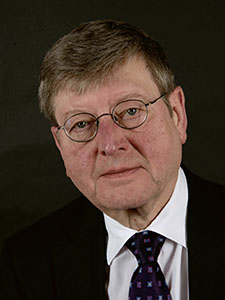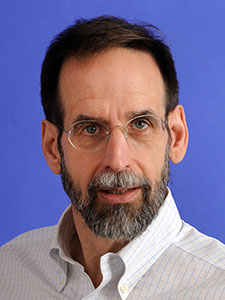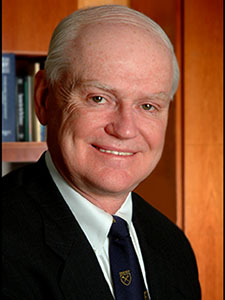Remembering Stephen Katz
Former Colleagues and Postdocs Who Were Inspired By Stephen Katz
Following are comments by some of the people who trained and/or worked with NIAMS Director Stephen Katz, who died on December 20, 2018. To read the article about the NIH Dermatology Branch, of which Katz was chief for many years, go to https://irp.nih.gov/catalyst/v27i3/the-dermatology-branch-at-nih.
KIM B. YANCEY, M.D.
Professor and Chair of the Department of Dermatology at University of Texas Southwestern Medical Center, Dallas
![Kim Yancey [male]](/sites/default/files/media/image/2022-02/2019-273_derm13-Yancey-200x300.jpg)
Education: University of Georgia, Athens, Georgia (B.S.). Medical College of Georgia, Augusta, Georgia (M.D.)
NIH: Dermatology Branch at NCI: Medical staff fellow (1981–1984); senior staff fellow (1984–1985); senior investigator (1993–2000)
Research while at NIH: As a fellow, he studied soluble mediators of inflammation and mechanisms of inflammation in skin. As a senior investigator, his work involved the characterization of the pathophysiology of autoimmune and inherited subepidermal blistering diseases.
Comments: “Steve introduced me to the universe of science and medicine. He exemplified how clinicians can perform research that elucidates the biology of skin and the pathophysiology of skin diseases. His influence was profound. Steve brought tremendous joy, warmth, optimism, enthusiasm, and wisdom to the lives of many.”
THOMAS N. DARLING, M.D., PH.D.
Professor and Chair of Dermatology at Uniformed Services University, Bethesda, Maryland

Education: Houghton College, Houghton, New York (B.S.); Duke University School of Medicine, Duke University Graduate School, Durham, North Carolina (M.D.-Ph.D.)
NIH: Dermatology Branch at NCI: Clinical associate (1994–1996); clinical fellow (1996–1998)
Research while at NIH: Under the mentorship of Dr. Yancey, his focus was diagnosing and treating patients with autoimmune blistering diseases. In the laboratory, he investigated the molecular basis of autoimmune and inherited blistering diseases, mainly generalized atrophic benign epidermolysis bullosa.
Comments: “Dr. Katz was an inspiring leader who deeply cared for the whole person. I admired how he was able to enter a room and transform the atmosphere by introducing excitement, hope, and a sense of camaraderie. At one point when I was discouraged about continuing a career in investigative dermatology, he arranged for me to give a talk at New York University so I would have a chance to see another facet of an academic career. This [visit] was critical in shaping my career choice and is just one small personal example of the interest he showed in others. I am grateful for the ways that Dr. Katz contributed to the Department of Dermatology at USU; for many years he fostered interactions between [it and] NIH’s Dermatology Branch.”
GEORG STINGL, M.D.
Former Professor and Chairman of Department of Dermatology, Medical University of Vienna, Vienna

Education: University of Vienna (M.D.)
NIH: Dermatology Branch at NCI: Visiting Fellow (1977–1978); Laboratory of Immunology, NIAID: Guest Researcher (1985–1986)
Research while at NIH: In NCI, Stingl’s work focused on the elucidation and exploration of phenotype and function of epidermal Langerhans cells. By doing so, he and the Katz team contributed greatly to the current understanding of the skin as an immune organ.
Comments: “Dr. Katz was one of the most important role models of my life, not only as a scientist and as a physician, but also as a human being who combined profound knowledge, wisdom, and leadership skills with warm-heartedness, empathy, and humor. As a scientist, Dr. Katz made superb and durable contributions to immune dermatology (contact hypersensitivity; autoimmune bullous diseases) and cutaneous immunobiology. Steve was unique in building an esprit de corps not only for his group but also for the entire Derm Branch. Even now, 40 years after leaving Steve’s lab, coming to a NIH reunion is like coming home, for me.”
MARK C. UDEY, M.D., PH.D.
Professor, Department of Medicine (Dermatology), Washington University School of Medicine, Saint Louis; Editor, Journal of Investigative Dermatology

Education: University of Wisconsin, Madison, Wisconsin (B.S.); Washington University School of Medicine, Saint Louis (M.D.); Washington University, Saint Louis (Ph.D.)
NIH: Dermatology Branch at NCI: Investigator (1989–1996); senior investigator (1996–2017); chief (2001–2017); Director, Dermatology Branch Residency Program (2001–2009); Deputy Director, NCI Center for Cancer Research (2006–2017), Head, Clinical Investigator Development Program (2009–2017)
Research while at NIH: Research on skin immunology, dendritic-cell and epithelial-cell biology, and Langerhans cells.
Comments: “There are probably more than 40 chairmen of departments of dermatology, past and present, who were fellows at the Dermatology Branch in the Katz era. Their contributions to investigative dermatology are substantial. Steve was a very productive incubator of young people. He accomplished this [feat] by infecting them with his enthusiasm for investigation, for training, for medicine, and for life. Steve was a beloved colleague, mentor, and friend to me and to many others.”
THOMAS J. LAWLEY, M.D.
Former Dean and William P. Timmie Professor of Dermatology, Emory School of Medicine, Atlanta

Education: Canisius College, Buffalo, New York (B.S.); State University of New York at Buffalo (M.D.)
NIH: Dermatology Branch at NCI: Clinical associate (1975–1977); investigator (1978–1981); senior investigator (1981–1988)
Research while at NIH: Studied immunologically mediated skin diseases such as dermatitis herpetiformis and cutaneous vasculitis; also worked on the role of microvascular endothelial cells in cutaneous inflammation as well as the role of complement in that process.
Comments: “Steve was a superb leader who was able to inspire young scientists to pursue their dreams. He recruited outstanding young scientists from all over the world to the Derm Branch and to his lab in particular. He then nurtured their careers and ultimately their success. Year after year, postdoctoral fellows from the [United States], Japan, Austria, England, Germany, France, China, Korea, and beyond flocked to the Derm Branch and Steve’s lab. Steve was a mentor to me throughout my whole career. He gave thoughtful and insightful advice and was always available to me. He was a very good friend and shared his wisdom whenever asked. I miss him greatly.”
This page was last updated on Monday, April 4, 2022
